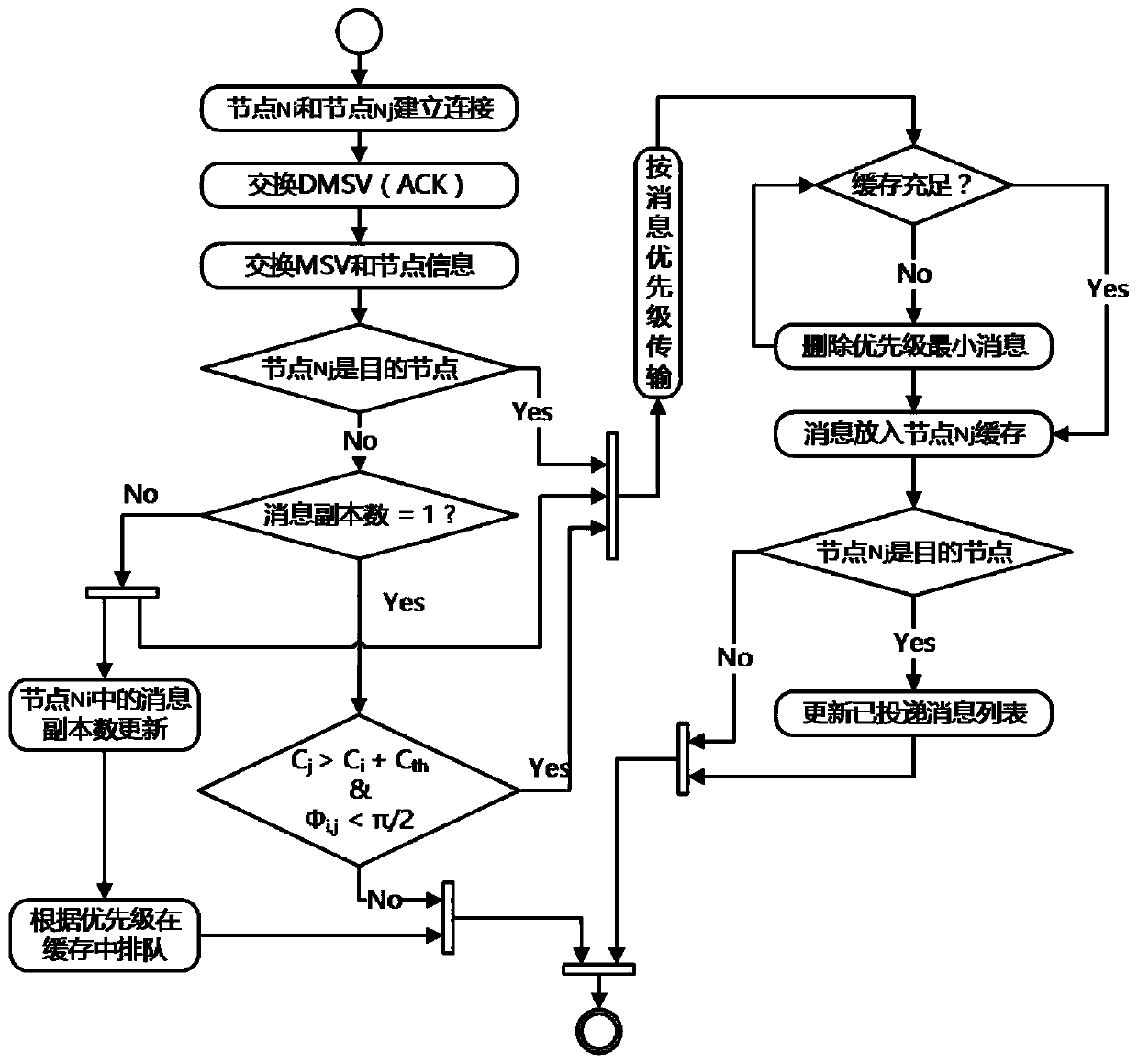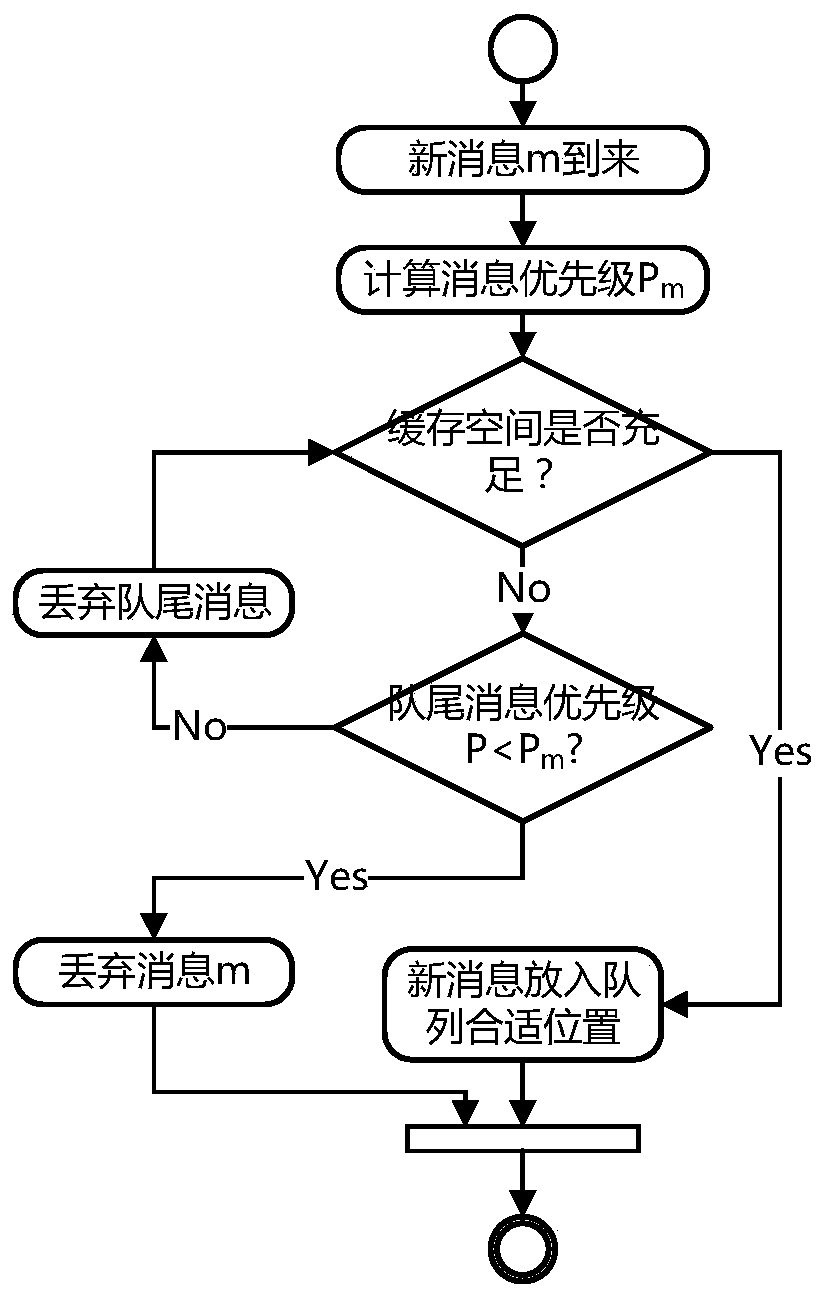Vehicle Distributed Focus Routing Protocol Method Based on Node Transmission Capability
A routing protocol and node transmission technology, which is applied in the field of vehicle distribution and focus routing protocols based on node transmission capabilities, can solve the problems of losing the opportunity to receive messages and reducing the effective utilization of cache
- Summary
- Abstract
- Description
- Claims
- Application Information
AI Technical Summary
Problems solved by technology
Method used
Image
Examples
Embodiment Construction
[0071] The accompanying drawings are for illustrative purposes only, and should not be construed as limiting the patent. The present invention will be further described below in conjunction with the accompanying drawings.
[0072] A vehicle-mounted distribution-focused routing protocol method based on node transmission capability, comprising the following steps:
[0073] Step 1: Each vehicle node maintains a collection of historical encounter nodes. When a new node is encountered, the ID and encounter time of the node are added to the collection. If the two nodes meet again in a short period of time, the encounter time is updated. If the time does not meet the node, the corresponding record is deleted from the collection. The node periodically compares the set of the current cycle start time and the current time, and calculates the rate of change of the meeting node. In addition, each node simultaneously records information such as its driving speed and remaining cache size. ...
PUM
 Login to View More
Login to View More Abstract
Description
Claims
Application Information
 Login to View More
Login to View More - R&D
- Intellectual Property
- Life Sciences
- Materials
- Tech Scout
- Unparalleled Data Quality
- Higher Quality Content
- 60% Fewer Hallucinations
Browse by: Latest US Patents, China's latest patents, Technical Efficacy Thesaurus, Application Domain, Technology Topic, Popular Technical Reports.
© 2025 PatSnap. All rights reserved.Legal|Privacy policy|Modern Slavery Act Transparency Statement|Sitemap|About US| Contact US: help@patsnap.com



